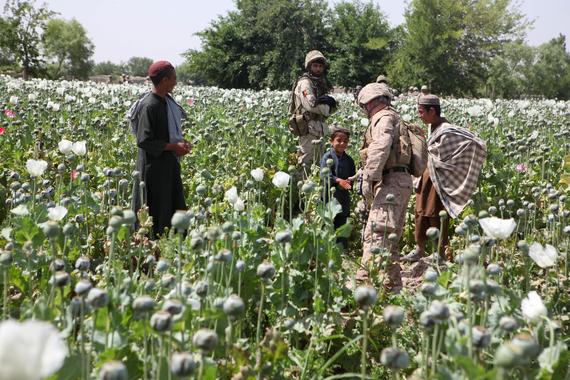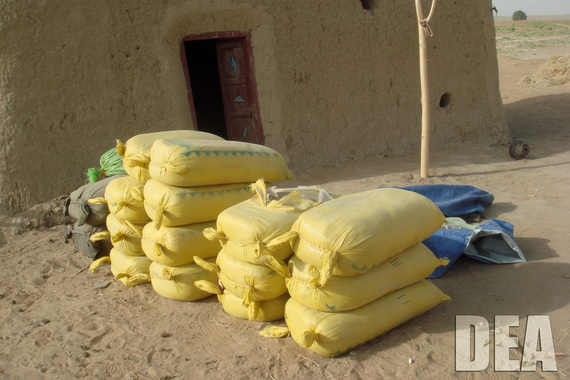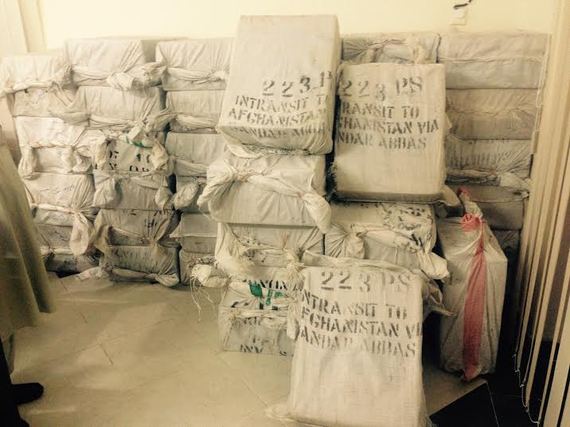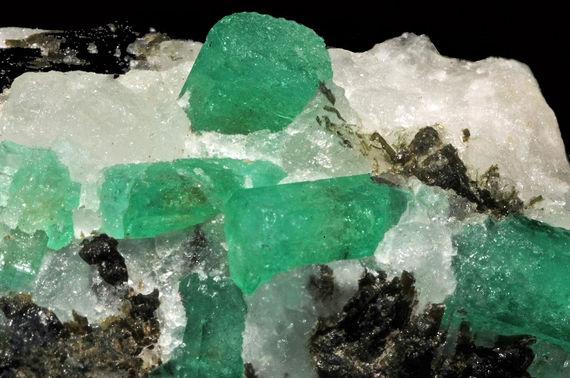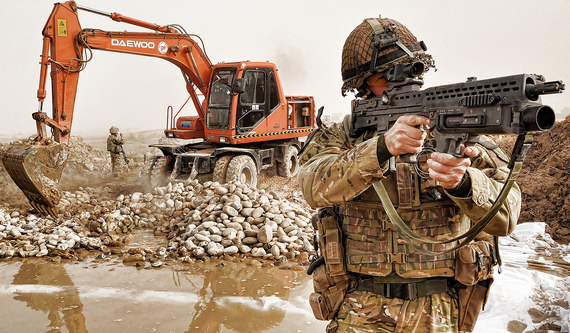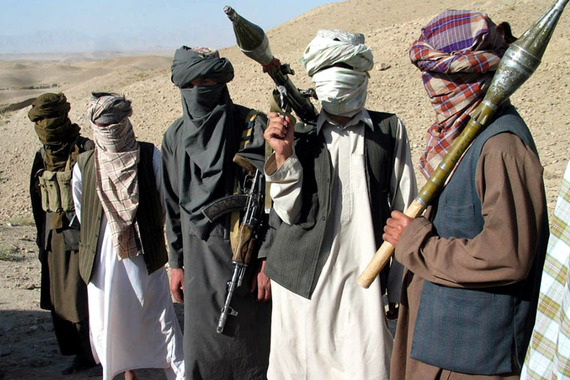A poppy field in Helmand province, Afghanistan
Officially, it's believed that the Taliban has a yearly budget of around 500 million dollars. In private, however, Western and Afghani intelligence agencies admit that the real Taliban budget is closer to between one billion and two billion dollars, with most opting for the higher number. Intelligence sources at the former International Security Assistance Force (ISAF), since replaced by the Resolute Support Mission (RSM), place the number even higher--at more than two billion. Moreover, it is widely believed that the Taliban has stockpiled cash amounting to several billion additional dollars in preparation of a major campaign to seize control of Afghanistan at some point in the future.
Where exactly does the Taliban get all this cash? The sources are many and varied. Narcotics are one of the principal sources of the Taliban's financing. Over the last two decades, Afghanistan has emerged as the principal source of the world's heroin, producing somewhere between 70% and 90% of the world's supply. Afghanistan sits at the heart of a region called the "Golden Crescent," a rugged mountainous region incorporating northeastern Iran, Afghanistan, and northwestern Pakistan, which is the center of the world's heroin production. Afghanistan is a "vertically integrated" heroin producer in that the entire process, from the cultivation of the opium poppy to the production of morphine and its subsequent conversion into heroin, all takes place within the country.
It does not appear that the Taliban is actually involved in the physical production of heroin or its antecedents. The Taliban's principal function in the drug trade is to organize the smuggling of heroin out of Afghanistan, smuggle in chemicals, principally acetic anhydride, that are necessary for the manufacture of heroin and insure that government officials, either through bribery or intimidation, don't interfere with the heroin trade as well as provide protection to the heroin factories. Because of its use for the synthesis of heroin by the deacetylation of morphine, acetic anhydride is a key ingredient in the manufacture of heroin and it is listed as a U.S. DEA List II precursor, and restricted in many other countries including, at least officially, Afghanistan.
Afghan government sources estimate that the Afghan heroin trade generates approximately two billion dollars in turnover within Afghanistan, with roughly one-third of the proceeds going to the heroin producers, one-third going to the Taliban, and the balance going to expenses including paying poppy farmers, running the heroin factories, and bribes to government officials and security personnel.
The production of hashish is also a significant source of funding for the Taliban. According to UN sources, Afghanistan is also the world's largest producer of hashish, supplying approximately 4,000 tons. Utilizing the same smuggling networks as those for heroin, hashish adds another 100 million to 150 million dollars to the Taliban's coffers. Currently there are approximately 50,000 acres devoted to the production of hashish in roughly 17 provinces. For farmers, the cultivation of hashish is actually more profitable than that of opium poppies, yielding a profit of around 4,000 dollars per acre.
Smuggling, in general, is also a major source of funding for the Taliban. The same networks that can be used to smuggle in arms and munitions, or smuggle out drugs, can be used to smuggle a broad range of goods. Cigarettes, after drugs, are the second most significant item smuggled. Afghanistan imports approximately two billion dollars of Western cigarettes a year, an amount that seems disproportionately high given that only about 20% of inhabitants smoke. In addition, local cigarettes sell for around 30 cents a pack, one-third of the price of Western cigarettes. Western cigarettes cost around a dollar a pack in Afghanistan.
Officially, the Afghan government levies an excise tax of 20% on imported cigarettes. In June 2015, that tax was increased to 100%. In addition, cigarettes sold in Afghanistan are required to bear a government stamp showing that the excise tax has been paid. It appears that the excise tax and its required documentation are largely ignored. Kabul street markets are full of vendors selling Western cigarettes all clearly marked "South Asia Duty Free Sales Only" and absent any government excise tax stamp.
There are only a handful of Duty Free Stores in Afghanistan, about a half dozen at major airports and border crossings, and a few that cater to ISAF personnel and diplomatic staff. It's hard to imagine that these stores, perhaps a dozen or two, are responsible for sales of two billion dollars of foreign cigarettes. Those same cigarettes in India will fetch four to five times the average Afghan street price. It's unclear how much cigarette smuggling adds to the Taliban's coffers. It could be in the range of 100 to 200 million dollars a year.
In addition, the Taliban operates a range of commercial businesses, including emerald mines in Pakistan's Swat Valley, timber concessions, some of which are legal some illegal, and marble quarries. The Taliban also levies taxes on citizens and businesses in areas they control. The extent of the contribution from these operations is unclear.
Kidnappings are another important source of revenue. Although the United States remains resolute in not paying ransoms for kidnapped Americans (The Bowe Bergdahl case notwithstanding), other European countries have been willing to ransom their citizens. France and Italy have both paid multi-million dollar ransoms to free their nationals. Even Great Britain, which ostensibly agrees with the United States in not paying ransoms, has, it is rumored, on at least one occasion, paid a ransom to free a kidnapped Briton.
In addition, extortion against nongovernmental organizations (NGOs) in the form of protection money or payments for "security services" is also common. Additionally, kidnappings or extortion of Afghan citizens in both Afghanistan and Pakistan also add to the Taliban's funds. All told, kidnappings and extortion of westerners, NGOs, and others probably contributes around 50 million dollars yearly.
Two other major sources of Taliban funding are Pakistan's Inter-Services Intelligence Agency (ISI) and, ironically, indirectly, the United States itself. Pakistan has supplied the Taliban with a broad range of arms, supplies, and financial help. In addition, the ISI has also assisted the Taliban's smuggling operations, indirectly adding to their financing.
A significant portion of the Taliban's Pakistani financing in turn came, ironically, from American sources. Pakistan has been a major recipient of US military and financial aid over the course of the past 15 years. Direct US military and economic assistance to Pakistan has amounted to over 20 billion dollars since 2001. Moreover, a significant amount of additional US aid to Pakistan was channeled through third party contractors. Pakistan was also reimbursed by ISAF for various services that it provided to American and coalition troops.
ISAF soldier keeps watch during construction of Route Trident in Helmand Province, Afghanistan
Directly and indirectly, U.S. financial aid to the Pakistani government is probably upward of 40 billion dollars. A significant amount of that aid went to the ISI, and from there some portion went to finance the Taliban. There is no way to determine what is the actual amount of financial support that the ISI has given the Taliban or how much of this assistance was derived from U.S. aid programs, since much of this aid is in the form of various services and supplies. The Afghan government estimates that actual cash transfers to the Taliban from the ISI have been in the range of 200 to 400 million dollars yearly.
Ironically, another major source of funding for the Taliban has been the construction projects undertaken under the auspices of ISAF, and the bilateral aid programs of the US and other European countries. After three decades of warfare, much of Afghan's infrastructure had been destroyed. Large portions of its major cities had been reduced to rubble. Power transmission grids, roads, and rail networks have all suffered extensive damage. All told approximately 30 billion to 50 billion dollars was spent on a broad range of construction projects. Many contractors will now readily admit that they routinely added 10% to as much as 40% to the cost of such projects to kick back to the Taliban as protection money.
On a recent trip to Afghanistan one contractor recounted to me a story of a bridge in Helmand province that was built and destroyed a total of six times. According to the story, the contractor agreed to add 20% to the budget for the project and to kick that amount back to the Taliban as protection money on condition that the Taliban would not blow up the bridge until he had been paid for the construction job.
Once the funds had been received he promptly paid the Taliban their cut and they proceeded to blow up the bridge. According to the contractor, the bridge was built and destroyed a total of six times, each time the Taliban getting their 20% of the construction budget. In conversations with other contractors, I tried to confirm if the story was true. All I could get was a chuckle followed by an enigmatic smile. Everyone I spoke to did confirm, however, that it was standard practice to build in a kick back to the Taliban to insure that militants did not attack or disrupt a construction project and that there were numerous examples of projects that were rebuilt multiple times.
I do not know if the story of the Helmand Bridge is true. I doubt we will ever know, but it is nonetheless a fitting metaphor for what happened in Afghanistan during the construction boom that followed the American intervention. Afghan intelligence sources estimate that the Taliban was able to skim off between 10% and 20% of the funds that were earmarked for construction over a roughly ten year period. That would put the Taliban's take at somewhere between five and ten billion dollars over this period, or roughly an average of $500 million to a billion dollars a year.
The one refrain I heard while I was in Afghanistan, from everyone, government sources, RSM personnel and the proverbial "Afghan man on the street", was that "the Taliban has plenty of money" and that "for the Taliban money is no problem." Considering that the Taliban leadership was largely uneducated and inexperienced in matters of finance, it is remarkable that they could administer a multi-stream financial empire that was spitting out yearly several billion dollars in income or that they could do this while in hiding in Afghanistan's and Pakistan's remote mountain wilderness.
It stands to reason that managing sums of money of this magnitude, collecting them, moving them around and spending them, would require a fairly sophisticated financial network and experienced money managers. Here again, all signs point to the ISI. They already have a track record managing and moving around sums of this magnitude having done it once before for the CIA while funding the mujahedeen fighters in Afghanistan during the 1980s. No doubt, the reputation of ISI personnel for having sticky fingers gives them a powerful incentive to manage the Taliban's cash.
In fact, the Taliban's most significant weapon is not its arms or its ability to mobilize jihadists, but the vast sums of money that it seems to have at its disposal. The Taliban has billions with which to buy influence, corrupt government officials, and suborn even the most resistant opponent. Money can buy guns and recruit soldiers, but its insidious effects in undermining opposition and corrupting government security forces is far more deadly and a far more formidable challenge. Considering that al-Qaeda's attack on September 11 cost less than 300,000 dollars, a jihadist organization with the Taliban's financial resources should be a matter of serious concern.
The most effective strategy for destroying the Taliban once and for all is to uncover the financial networks that it uses to move money around, to cutoff its funding sources, and shut down the smuggling networks and illicit activities that it uses to fund its operations. It may well be that in time the Taliban may drop any pretense of jihadism or a political agenda and simply revert to a criminal enterprise, a common enough evolution among political-terrorist organizations. For now the most effective strategy the US can use to shut down the Taliban is simply to "follow the money."

